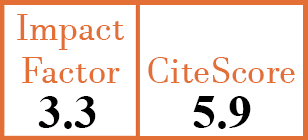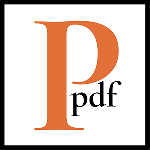Full Papers
Clinical characteristics of macrophage activation syndrome in adult-onset Still’s disease
Q. Gao1, Y. Yuan2, Y. Wang3, J. Jiang4, Z. Ye5, T. Liu6, Z. Jiang7, L. Zhao8
- Department of Rheumatology, the First Hospital of Jilin University, Changchun, Jilin, China.
- Department of Rheumatology, the First Hospital of Jilin University, Changchun, Jilin, China.
- Division of Clinical Research, The First Hospital of Jilin University, Changchun, Jilin, China.
- Division of Clinical Research, The First Hospital of Jilin University, Changchun, Jilin, China.
- Department of Rheumatology, the First Hospital of Jilin University, Changchun, Jilin, China.
- Department of Rheumatology, the First Hospital of Jilin University, Changchun, Jilin, China.
- Department of Rheumatology, the First Hospital of Jilin University, Changchun, Jilin, China. jiangzhenyu2012@163.com
- Department of Rheumatology, the First Hospital of Jilin University, Changchun, Jilin, China. zhaoling52@163.com
CER14541
2021 Vol.39, N°5 ,Suppl.132
PI 0059, PF 0066
Full Papers
Free to view
(click on article PDF icon to read the article)
PMID: 34251315 [PubMed]
Received: 18/02/2021
Accepted : 20/05/2021
In Press: 29/06/2021
Published: 06/10/2021
Abstract
OBJECTIVES:
Macrophage activation syndrome (MAS) is considered the most severe complication of adult-onset Still’s disease (AOSD). This retrospective observational study was conducted to explore the clinical characteristics of AOSD-MAS patients, the risk factors for MAS in AOSD and prognostic factors in AOSD. Early changes in the clinical characteristics of AOSD-MAS were also studied.
METHODS:
111 hospitalised AOSD patients were included in this retrospective analysis and analysed for the features of AOSD-MAS, selecting independent risk factors associated with MAS and the correlations between clinical characteristics and patient survival.
RESULTS:
Nine subjects (8.1%) developed MAS. AOSD-MAS patients had a higher incidence of jaundice (33.3% vs. 2.9%, p=0.007) and aspartate aminotransferase (AST) greater than 5-fold (33.3% vs. 2.9%, p=0.007). Jaundice was associated with an increased risk of MAS (OR=16.50, 95% CI: 2.73-99.82, p=0.002). The AOSD-MAS group had a higher mortality rate (55.6% vs. 8.0%, p=0.001). MAS (HR=11.22, 95% CI: 3.46-36.38, p<0.001), and white blood cell (WBC) greater than 20 109/L (HR=5.80, 95% CI: 1.09-30.92, p=0.040) were independent prognostic factors for death in AOSD patients. In the AOSD-MAS group, transaminase, triglycerides (TGs) and serum ferritin (SF) were elevated in the early disease stage, sometimes earlier than changes in blood cells in MAS.
CONCLUSIONS:
MAS occurrence significantly reduced the survival rate of patients with AOSD. The presence of jaundice was associated with MAS occurrence. MAS and a WBC count >20 109/L were associated with a high risk of AOSD-related death. AOSD should alert the possibility of MAS when elevated transaminase, TGs and SF cannot be explained.



